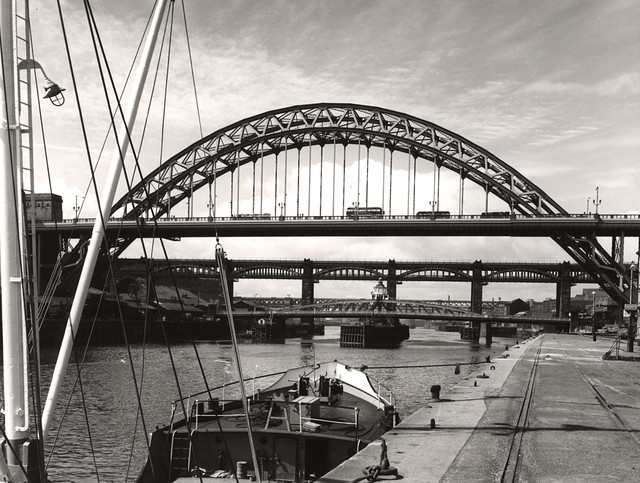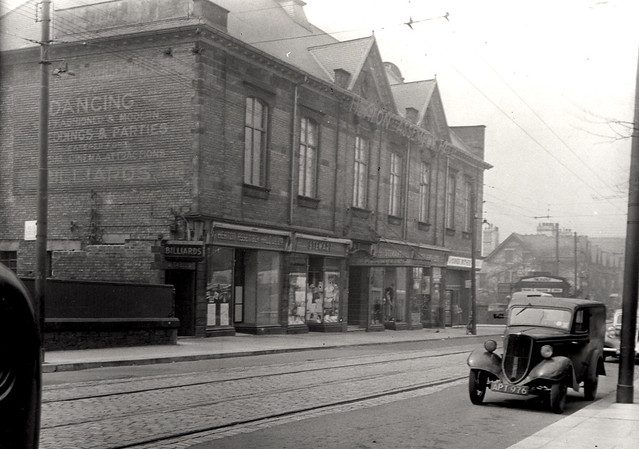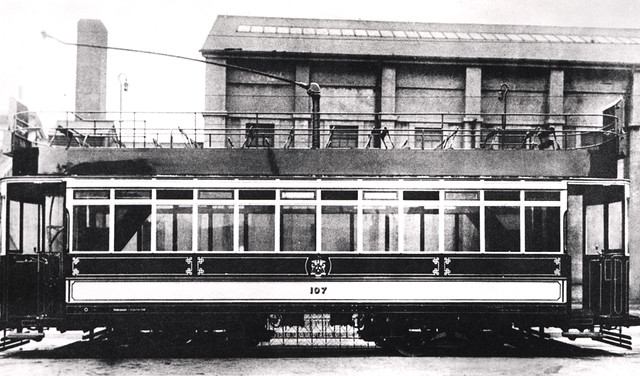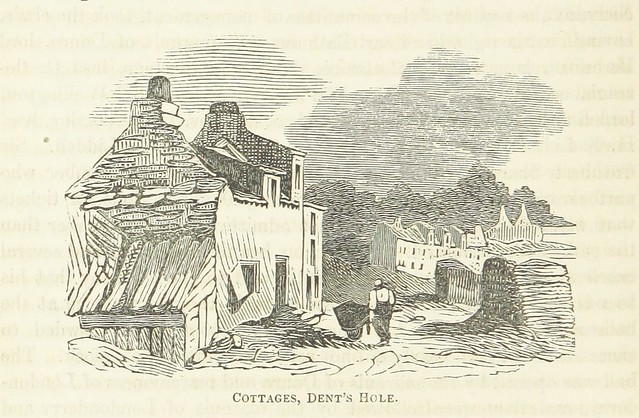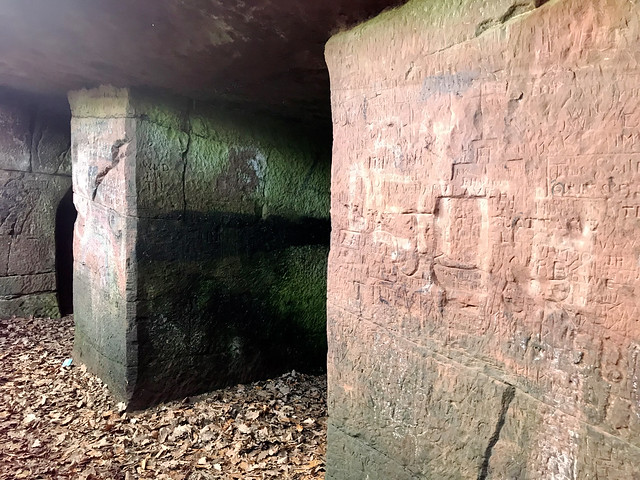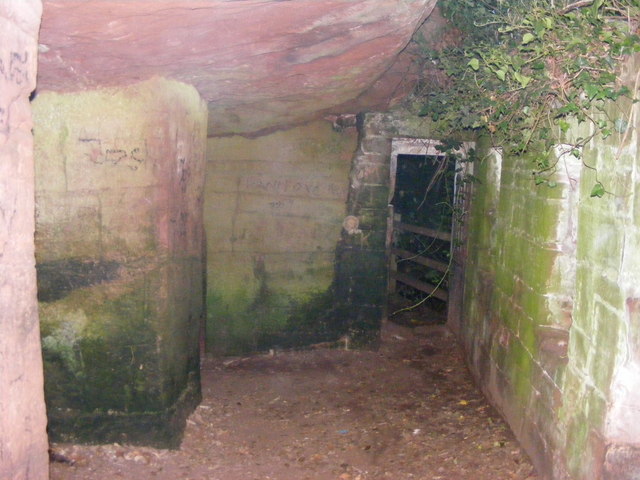Topics > Tyne and Wear > Newcastle upon Tyne > All Saints' Parish, 1855
All Saints' Parish, 1855
Extract from: History, Topography, and Directory of Northumberland...Whellan, William, & Co, 1855.
This parish comprises the townships of All Saints', Byker, and Heaton, the former of which constitutes the eastern portion of the town and county of Newcastle-upon-Tyne, and its history will be found incorporated with the history. &c. ot that place. The total area of the parish is 2,201 acres, and its population in 1801, was 17,833; in 1811, 17,697; in 1821, 20,877; in 1831, 22,740; in 1841, 27,948; and in 1851, 33,592 souls.
BYKER is a township and village formerly held by the tenure of grand sergeantry, by a family who bore the local name, but is now the property of several proprietors. The township contains 687 acres, and the number of its inhabitants in 1801, was 3,254; in 1811, 3,029; in 1821, 3,852; in 1831, 5,176; in 1841, 6,024; and in 1851, 7,040 souls. THE VILLAGE of Byker is pleasantly situated on an eminence commanding an extensive prospect of the town of Newcastle, the river Tyne, and the northern part of the county of Durham. It is said to be a place of great antiquity but we have little more than tradition to warrant the assertion. Edward II. dates letters from Byker; and on the next day from Newcastle. The Blue Bell Inn in this village bears every mark of antiquity, and formerly possessed in its quaint old rooms some fine specimens of oak carving, but one of the occupants broke them up for firewood, and not a vestige of them now remains.
BYKER HILL is a hamlet in this township, situated one mile and three quarters east of Newcastle. DENT'S HOLE is also a small village in Byker township, about the same distance east by south of Newcastle. OUSEBURN, ST. ANTHONY'S, and ST. PETER'S, are likewise villages in this township.
HEATON, a township and village in this parish, comprises an area of 911 acres. The population of the township in 1801, was 183; in 1811, 497; in 1821, 470; in 1831, 501; in 1841, 450; and in 1851, 435 souls. This manor was formerly the property of the Babingtons of Harnham, and in 1628 was the residence and property of Sir Henry Babington, one of whose female descendants named Atkinson, a scullion at an inn, received a share of Heaton Colliery in 1796. THE VILLAGE of Heaton is situated about one mile and three quarters E.N.E. of Newcastle, and is said to have served as a place of retreat to King John during his contests with his barons. In Bourne's time there were still to be seen here the ruins of an ancient building, and the remains of a fortification.
HEATON HALL is delightfully situated upon the steep and woody banks of the Ouseburn, and is the seat of A. L. Potter, Esq., but formerly of the Ridley family, who now reside at Blaydon. It was erected in 1713, when the family had several extensive collieries in this neighbourhood, but it was afterwards faced with stone and otherwise improved.
"Heaton Colliery," says a local writer, "is memorable in the history of mining catastrophes. The workings were held at a very great depth, and having a dip or inclination from one side to the other, the shafts of course occupied a position most convenient to the then present workings. The upper and neighbouring seams had formerly been wrought as a colliery under the name of Heaton Banks, and when the coal was wholly worked out, the shafts were covered over with boards and earth, and planted with clumps of trees. In the course of time, the old workings became entirely filled with water, and bursting out with enormous violence, rushed clown into the new mine, and enclosed in a living tomb seventy-five human beings the water rising to the height of thirty-five fathoms, in the shaft or perpendicular entrance to the mine; and as the greater number of persons who were below at the time were at work about a mile and a half to the west of the pit mouth, they were above the level of the water, and thus deprived of any means of escape. This melancholy accident happened on the 3rd May, 1815, and though every effort was made to gain access to them by the old workings, which when found unsuccessful, was applied to the pumping of the water out of the pit, yet it continued to gain upon them, and it was not till February in the ensuing year that the water was sufficiently got under to allow of the bodies being obtained. Owing to the water being strongly impregnated with pyrites, the blade of a knife which was in the pocket of one of the drowned men was entirely corroded, though the horn haft remained entire. Such of his clothes as were of woollen fabric were entirely destroyed, while those that were of linen were uninjured. Many of the bodies were nearly naked, and all in a state of great decay, appearing one and all to have died of hunger. They had got into a part of the [it where the water did not reach them, and had been many weeks employe in endeavouring to work their way into an old pit, by which they fondly hoped to have escaped. They are supposed to have failed in the attempt, through hunger and consequent emaciation, as every horse in the pit was eaten to the bone! The unfortunate men had a. water mark fixed, that they might observe if it fell, and one man who is supposed tq have been set to watch it, was found dead at his post."
BUSY COTTAGE is a village in this township, one mile and a half from Newcastle.- (For Directory, etc, of this parish, see Newcastle)

Co-Curate Page
Newcastle, 1855
- Extract from: History, Topography, and Directory of Northumberland...Whellan, William, & Co, 1855. This ancient and interesting town - the last great centre of enterprise towards the northern margin of England, …



